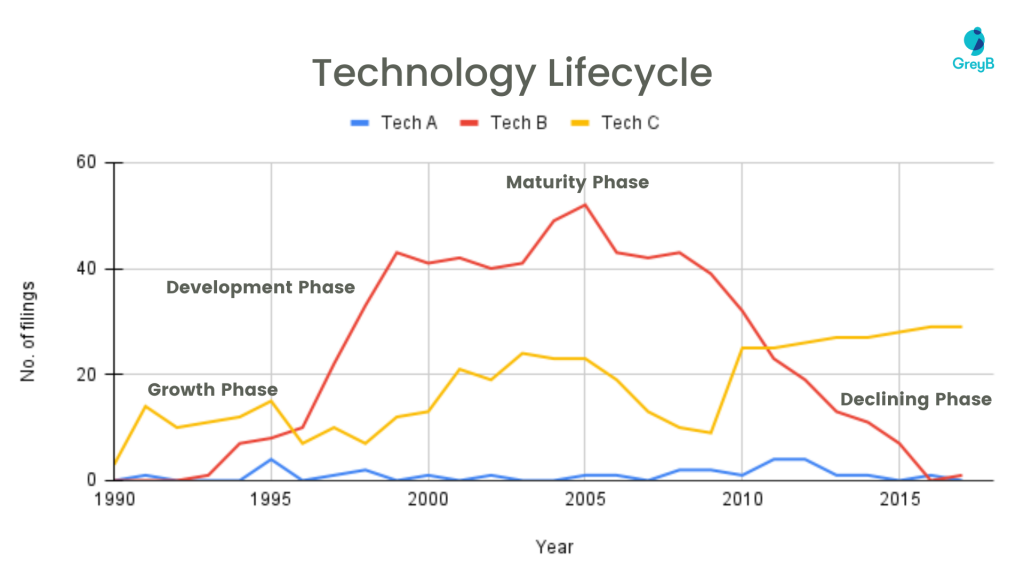A solid patent strategy is just as important as a well-planned business strategy for a corporation. With thousands of patents being filed every year by technology giants, developing a patent strategy is more challenging than ever. Business strategy is always market-driven, and so should be a patent strategy. It is important to understand the current state of technology and when that condition is likely to change. Here, the issue is that most IP departments consider this to be a job of the R&D department, while in reality, it is the R&D and IP collaboration that can reap quality results for the business.
Since the industry has become more advanced, R&D is not only a driver of innovation in today’s digital world but is also essential for the long-term growth of IP.
Why is R&D and IP collaboration so important?
Taking a closer look at this collaboration, let’s understand why R&D and IP collaboration is important.
- Early Feedback – There are instances when our R&D team is working on a previously discovered innovation. Now, instead of letting R&D waste the company’s time and resources on the existing innovation, the IP team can provide feedback to R&D and inform them of the product’s existence. As a result, their research can be redirected quickly.
- Wider claim – The goal of every patent is to improve the chances of covering a broader scope. Collaborating allows IP people to gain early insights into research, enabling them to make wider claims. As a result, their proposed patent is more flexible than one they would have claimed if they had worked independently.
- Better Understanding – As a result of being involved in the research process from the ground up, the IP team has a thorough understanding of the research that has already taken place on the technology. The collaboration leads to improved IP processes, which in turn provides better knowledge of potential risks or possibilities in the market.
- Tech/ Innovation Scouting – Through this collaboration, R&D can look for ideas or technology outside the organization. In this case, the IP department can assist R&D by locating organizations or startups that have already identified such inventions that can assist R&D in continuing their research.
- FTO – IP experts can assist R&Ds in conducting FTO searches and ensuring the research’s authenticity. If they discover an existing product, IP team can guide R&D in moving on to new research without wasting further time and resources.
Author’s note: Follow this FTO Search Strategy to ensure that all threats are covered before launching your product.
To understand this better, let’s first look at the lifecycle of a technology and where do R&D and IP fit in it.
Lifecycle of Technology: Role of R&D and IP
Growth Phase
During this phase, the field of technology is discovered and patents are filed to exploit the technology. The investments are made after considering the risk of failure of technology on maturation.
This is where a significant amount of effort is spent exploring the applications of a specific area and, as a result, patents are filed. During this time, interest in a given technology is typically minimal. Here, a corporation spends a lot of money on radical innovation in order to pique the public’s curiosity.
Roles – During the development phase, an R&D team innovates and files a lot of patent applications. The IP Team, at this stage, could help file various patents that could bring a lot of revenue for the company when the technology matures. Additionally, a number of practices are followed to enhance your ability to file revenue-generating patents.
Development Phase
In the development phase, the interest in the particular technology goes up. Universities and big corporations, in general, are the players behind the game. They reap the benefit by participating in the market of emerging technology.
Early technological advancements capture the public’s attention. This leads to a significant surge in advancements and innovations in an attempt to get around competitors’ patents.
The patented inventions are disclosed and made available to the general public during this phase. Early adopters turn into potential customers. Furthermore, many marketing efforts are expended in order to establish a stable market reputation.
Roles – Here, IP departments can play a crucial role by:
- Keeping a continuous track of technologies that are entering the development phase.
- Analyzing and predicting when a technology is moving from the growth phase to the development phase.
The IP department, then, can use all of this information to keep the R&D department updated about the happenings of their domain, which can be used further to build their next strategy.
Maturity Phase
This is the stage where a technology reaches the zenith and becomes commonplace. In this phase, there are few improvements that are made to the existing technology with no breakthroughs occurring.
During this stage, patenting activities fall low and the late adopters and laggards form the customer base. There is stifling competition between companies during this phase, which results in lowering the prices to appear irresistible to the customer base.
Roles – The important part, for the IP dept. of every company, is to understand when the technology is entering from the Development phase to the Maturity phase. And then communicating that to R&D so that they can stop making efforts in that direction and channel their energy into the next thing.
Most companies misinterpret the growing phase of business as the technology development phase, even though their businesses are a few years behind the technology. By the time they realize declining business growth, technology has already taken a turn. Sun Microsystem, Motorola, Nokia, Blackberry are all examples of this misalignment between the technology and the business strategy of the company.
Declining Phase
The declining phase is the most frowned upon phase in the technology lifecycle. Here the patenting activities stop abruptly with a steep decrease in the sales of the product. During these times, the value of patents hit a low. Many companies buy these low-cost patents and wait for the market to recover to reap benefits.
At such times, patent portfolios are built at low prices for a technology that has faltered. Any investment made in R&D for the current technology yields no profits. During this, when a technology becomes obsolete, replacements are readily available.
This is the best phase for a company to shed off the extra load that is there due to the low-quality patents filed during the development and maturity phase. Low-quality patents can make a hole in the company’s pocket resulting in a loss of millions of dollars. Moreover, if these patents are filed in multiple countries, you can multiply the expense. So, this is the right time to keep what is vital and shred the clutter.
Low-quality patents are absolutely valueless. Here’s how you can spot low-quality patents in your portfolio and kill them.
Roles – The role of the IP department here is to find out what went wrong last time that led them to the low-quality filing. The IP department can analyze the whole phase to find out the potholes. They can then communicate their results to the R&D team. The results may help R&D decipher what could be low-quality research later in the future, and they can channel their resources and time on the vital ones.
Recovery Phase
This phase is also called the phase of the resurrection. The companies that were able to amass huge patent portfolios for the technology could use it to earn licensing royalties as they move to new technologies.
Roles – Again, this is a phase where the IP department can play an important role by adding an additional revenue stream to the company’s overall revenue. They can also help the company recover all the investments made during the development phase in R&D.
This phase could yield extra profits if the current technology is merged with a new technology in which there is little or no innovation taking place. In such cases where two technologies merge to produce new innovations, there is very little to lose.
Once you identify the current phase of a particular technology, it becomes simple enough to decide whether you should invest in the technology or refrain from it. Thus, the proper investments made at the right time could help yield increased profits.
Your R&D and IP teams work side by side throughout the technology life cycle. But as a result of their differences, these departments face many challenges. These challenges often remain unresolved and hamper the growth of your business. Let’s understand what are these challenges and see how one can overcome them through R&D and IP collaboration.
Challenges faced in R&D and IP collaboration
- Language barrier – The IP department tends to prefer legal language, whereas R&D prefers technical language. This linguistic barrier can be difficult to overcome, making communication between the departments challenging. To address this issue, you should create an environment in which everyone is free to talk openly and communicate in simpler language wherever possible.
- Delayed Feedback – When working on new innovation, there are times when the innovation has already been discovered or is being worked upon. Here, R&D cannot discover such information on its own. This results in futile work on some innovations with no future. To address this, IP heads can do research and provide feedback on the product to R&D personnel, ensuring that no time or resources are wasted.
- Physical Separation – Another difficulty is the physical separation of departments. This can diminish the IP’s engagement in R&D activities and vice versa. As a result, the two have fewer opportunities to collaborate effectively. To address this issue, ensure that there is no such physical boundary between departments and that they are included in the procedures from the start.
Concluding notes
Now that you understand the importance of R&D and IP collaboration, how do you know if your R&D and IP teams are working together? This can be a tough question to answer.
The already induced gaps amongst the teams have widened even more post the pandemic situation. So, how do you facilitate easy communication between both departments?
Well, that’s where SLATE comes in!
A platform where your teams can not just communicate without any interruptions but collaborate and keep track of your projects. All in real-time with a multiple-level review system. SLATE can help you bridge the gap between R&D and IP.
Interested to know more?
Related read: How technology lifecycle helps in patent portfolio maintenance?
Authored By: Ridhima Mahajan, Market Research











